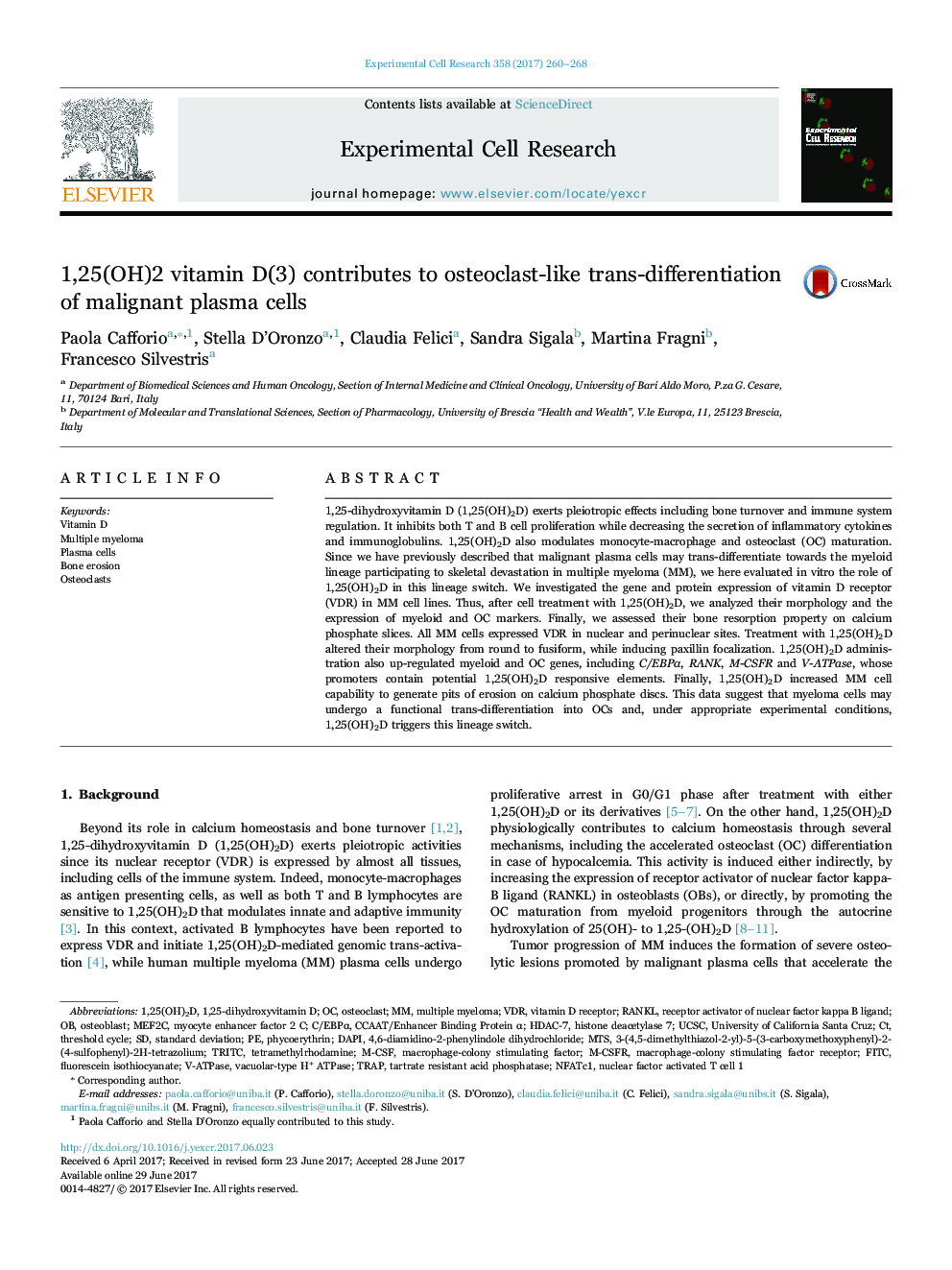| کد مقاله | کد نشریه | سال انتشار | مقاله انگلیسی | نسخه تمام متن |
|---|---|---|---|---|
| 5527164 | 1401568 | 2017 | 9 صفحه PDF | دانلود رایگان |

- Myeloma cells, under appropriate conditions, display an osteoclast-like phenotype.
- In vitro, 1,25(OH)2-D induces cytoskeleton remodeling in malignant plasma cells.
- 1,25(OH)2-D up-regulates typical myeloid and osteoclast markers in MM cells.
- 1,25(OH)2-D reinforces the bone erosive activity of multiple myeloma cells.
1,25-dihydroxyvitamin D (1,25(OH)2D) exerts pleiotropic effects including bone turnover and immune system regulation. It inhibits both T and B cell proliferation while decreasing the secretion of inflammatory cytokines and immunoglobulins. 1,25(OH)2D also modulates monocyte-macrophage and osteoclast (OC) maturation. Since we have previously described that malignant plasma cells may trans-differentiate towards the myeloid lineage participating to skeletal devastation in multiple myeloma (MM), we here evaluated in vitro the role of 1,25(OH)2D in this lineage switch. We investigated the gene and protein expression of vitamin D receptor (VDR) in MM cell lines. Thus, after cell treatment with 1,25(OH)2D, we analyzed their morphology and the expression of myeloid and OC markers. Finally, we assessed their bone resorption property on calcium phosphate slices. All MM cells expressed VDR in nuclear and perinuclear sites. Treatment with 1,25(OH)2D altered their morphology from round to fusiform, while inducing paxillin focalization. 1,25(OH)2D administration also up-regulated myeloid and OC genes, including C/EBPα, RANK, M-CSFR and V-ATPase, whose promoters contain potential 1,25(OH)2D responsive elements. Finally, 1,25(OH)2D increased MM cell capability to generate pits of erosion on calcium phosphate discs. This data suggest that myeloma cells may undergo a functional trans-differentiation into OCs and, under appropriate experimental conditions, 1,25(OH)2D triggers this lineage switch.
Journal: Experimental Cell Research - Volume 358, Issue 2, 15 September 2017, Pages 260-268